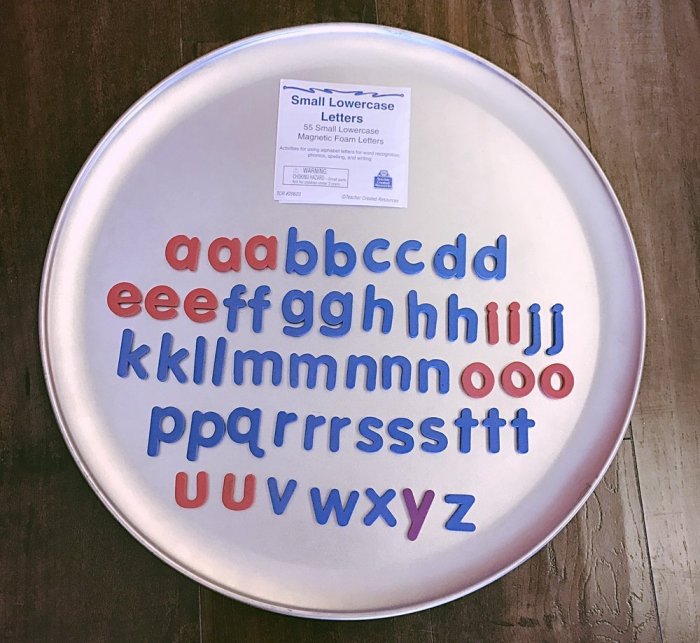Pan finds it difficult to learn the alphabet, embarking on an educational journey fraught with challenges. This captivating narrative delves into the specific obstacles Pan faces, exploring the underlying reasons and proposing effective strategies to support their learning.
Unraveling the complexities of Pan’s alphabet acquisition, we examine cognitive and developmental factors that may contribute to their struggles. We uncover the importance of tailored teaching methods, engaging activities, and positive reinforcement, highlighting the crucial role of parents and educators in fostering a supportive learning environment.
Pan’s Challenges in Alphabet Acquisition

Pan encounters specific difficulties while learning the alphabet. These challenges manifest in several ways:
- Difficulty recognizing letter shapes:Pan struggles to differentiate between similar-looking letters, such as “b” and “d” or “p” and “q”.
- Problems with letter-sound correspondence:Pan has difficulty connecting letters to their corresponding sounds. For example, he may know the letter “C” but cannot produce the /k/ sound.
- Limited phonemic awareness:Pan lacks the ability to hear and manipulate individual sounds in words. This makes it challenging for him to identify and segment phonemes.
- Poor visual memory:Pan has difficulty retaining the shapes and sequences of letters, which hinders his ability to recognize and recall them.
- Weak fine motor skills:Pan’s fine motor skills may be underdeveloped, making it difficult for him to write letters legibly.
These challenges may stem from cognitive or developmental factors, such as:
- Dyslexia:A specific learning disorder that affects reading and language skills, including alphabet acquisition.
- Attention deficit hyperactivity disorder (ADHD):A neurodevelopmental disorder that can lead to difficulty with attention, focus, and memory.
- Developmental delays:Pan may have general developmental delays that affect his cognitive and language abilities.
Strategies to Support Pan’s Learning: Pan Finds It Difficult To Learn The Alphabet
To support Pan’s alphabet acquisition, effective teaching methods tailored to his learning style are essential:
- Multisensory approach:Engage multiple senses by using visual aids, tactile activities, and auditory cues.
- Phonics-based instruction:Focus on teaching letter-sound relationships through systematic phonics instruction.
- Chunking:Break down the alphabet into smaller chunks to make it more manageable.
- Repetition and practice:Provide ample opportunities for Pan to practice recognizing and writing letters.
- Games and activities:Make learning fun and engaging with games like letter matching, alphabet puzzles, and writing exercises.
Patience and positive reinforcement are crucial in Pan’s educational journey:
- Patience:Understand that Pan may progress at a slower pace and provide him with the time and support he needs.
- Positive reinforcement:Celebrate Pan’s efforts and progress, no matter how small, to boost his confidence and motivation.
Role of Parents and Educators
Parents and educators play a vital role in supporting Pan’s alphabet acquisition:
- Home environment:Create a home environment that encourages literacy, such as providing books, engaging in read-alouds, and talking about letters and words.
- Collaboration:Collaborate with Pan’s educators to ensure consistency in his learning experiences and address any challenges.
- Communication:Stay informed about Pan’s progress and any concerns from his educators to provide support at home.
Assessment and Evaluation

Regular assessment is essential to track Pan’s progress and make necessary adjustments:
- Informal assessments:Observe Pan’s interactions with letters and words to assess his understanding.
- Formal assessments:Use standardized assessments to measure Pan’s alphabet knowledge and skills.
- Evaluation:Analyze Pan’s assessment results to identify areas of strength and weakness, and adjust the teaching approach accordingly.
Resources and Support

Various resources and support options can assist Pan’s alphabet learning:
- Books:Alphabet books, phonics readers, and interactive books.
- Websites:Educational websites with games, activities, and printable resources.
- Apps:Alphabet learning apps that provide interactive and engaging content.
- Support groups:Connect with other parents and families who have children with similar challenges.
- Professional help:Consider consulting with a speech-language pathologist or educational therapist if necessary.
Questions Often Asked
Why does Pan find it difficult to learn the alphabet?
Pan may face challenges due to cognitive or developmental factors, such as difficulty with letter recognition, phonemic awareness, or working memory.
What teaching methods can help Pan learn the alphabet?
Effective methods include multisensory activities, such as letter tracing, letter-sound matching games, and interactive storytelling.
How can parents support Pan’s alphabet learning?
Parents can create a print-rich environment at home, read aloud to Pan, and engage them in alphabet-related activities.